Tourism Statistics will Speak Truth
.jpg)
It is no secret that Russian tourism statistics are far from perfect, and both the government and the business are dissatisfied with them. They can only be described as confounding. For instance, Rosstat (Russian Federal State Statistics Service) puts the number of ‘pure’ tourists who visited Russia in 2012 at a mere 2.57 million, while according to St. Petersburg authorities’ measurements, 3 million foreigners came to the city during the same year.
“Do you trust our official tourism statistics?” When asked this question, General Director of St. Petersburg company ‘Mir’ and Doctor of Economics Valery Fridman immediately answered with a resounding “No”, and then added: “Because the figures are inflated and not sufficiently corroborated. Sometimes even their relation to tourism can be quite tenuous.”
Director of North-West regional division of Russian Tourism Union Yekaterina Shadskaya says that the figures that are announced both in St. Petersburg and in Russia on the whole can hardly be 100% reliable..jpg)
“For instance, there is constant confusion between the number of border crossings and the actual number of tourists, not to mention the mistakes when splitting them up in accordance with the purpose of visit. The fact that the information emanates from different Russian tourism departments complicates matters even further,” she told TRN magazine.
The situation remained the same in 2013: according to the data for nine months provided by Rostourism (the figures are based on the information of Rosstat), Russia’s inbound tourist flow was a meager 2.31 million visitors, while Moscow and St. Petersburg authorities maintain that in reality this number was 3-4 times bigger. According to Moscow Migration Service, in 2012 about 5.2 million foreign tourists came to Moscow, and in 2013 this number was 5.4 million: the capital’s division of Federal Migration Service registered a substantial growth in tourist arrivals back in May of the last year. If we add this to St. Petersburg’s estimations, then it becomes really unclear whom we are to trust…
A miscalculation?
On average, Rosstat considers only each 10th visitor a tourist: during nine months of 2013 almost 24 million foreigners entered Russia, out of whom only 2.31 million were officially given the tourist status by the service.
No matter which destination you look at – there is a big difference in the methods of measurement. Take Finland, for instance. During nine months of 2013 there were over 4.2 million Russian visits, only about 787 thousand of which were considered tourism-related by Rosstat. As for Finns themselves, for some reason they think that everything that is not a business trip is tourism-related.

There are plenty of regions in Russia where near-border tourism is well-developed and the number of mutual visits exceeds millions. For instance, Russians from the Far East feel completely at home in China, from Kaliningrad Oblast – in Poland, and those from Murmansk Oblast – in Norway…
The gap between measurements is sometimes quite startling. For instance, during nine months of 2013 there were 1.71 million Russian visits to Estonia, yet Rosstat considers only slightly more than 25 thousand of these visits to be tourism-related. There were upwards of 1.2 million Polish arrivals to Russia, and again, only 25 thousand of them were considered tourism-related. About 1.1 million Finns visited Russia, and only about 77 thousand of them were deemed tourists.
Unfortunately, the current tourism statistics in Russia preclude from measuring not only the exact number of tourists, but even the actual number of tourism objects and companies. That was stated in a recent criticism by Head of Moscow Tourism and Hotel Business Committee Sergei Shpilko, who said: “If we want to accurately assess the state of our industry, then the first thing we need to do is change the obsolete measurement methods.”
Lawyer and adviser to the executive board for travel agencies of North-West regional division of Russian Tourism Union Svetlana Merzhvinskaya agrees.
“Even regulatory bodies, like Rospotrebnadzor, cannot specify the exact number of travel agencies in the country,” she says. “The overarching problem of inaccurate tourism statistics stems from the lack of common, transparent and well-thought-out measurement criteria. As long as we do not have them in place, we will also not have accurate data.”
Aleksey Musakin, director of St. Petersburg’s division of Russian Hotel Association, is positive: while the existing statistics can give us a rough idea of the number of foreign tourists who come directly to the country, when it comes to ‘one-day’ and domestic tourists, these statistics prove completely ineffectual.
An arduous task
One would think that there is nothing hard about the methods of measuring tourism, and one would be quite wrong.
So what are the most wide-spread methods? The simplest way is to consider all the foreigners who enter the country tourists, like they do in Finland. Many countries (Switzerland and some others) count the nights tourists spend in accommodation facilities as opposed to tourists themselves. Up until recently Russia and other post-Soviet counties (like Ukraine, for instance) have been using four methods at once, the most progressive being the tourism satellite account (TSA), which provides information not only on the approximate number of tourists, but also on plenty of other indicators (the amounts of money they spend, the multiplication effect).
This method has often been praised by Head of Rostourism Alexander Radkov. “It will not only help us measure the number of tourists more accurately, but also measure the real contribution of the tourism industry to the economy of the country and of separate regions,” he said in September of 2013. The leaders in satellite accounts are Canada and Norway: the former produced travel statistics as far back as 1991. However, even for Europe this method is still pretty much a novelty, since Eurostat started implementing satellite accounts only in 1997. As for Russia, there have been talks and negotiations on the matter for 5-6 years now…
The National Academy of Environmental Protection and Resort Development (NAPKS) in the Autonomous Republic of Crimea considers an apparent shortcoming of satellite accounts to be the lack of a unified electric system for registering operations in the recreational sphere.
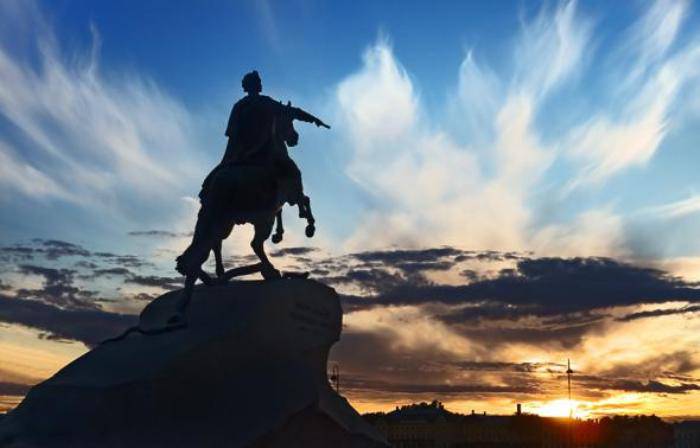
“When it works, you really can obtain lots of important information. In Europe there are codes that correspond to the respective goods and services: when a customer pays for them, the information is transmitted to the database which registers it,” it says in their research. It follows that in order to obtain objective information through the satellite system you need to not only have a unified electric registry base in place, but also have people who are willing to pay for goods and services with the ‘plastic’ currency. People in Russia and Ukraine still mostly prefer cash, which can often go unregistered…
“In an ideal environment satellite accounts would be a great method of tourism measurement,” says Aleksey Musakin. “But we need to take into account the idiosyncrasies of our country, where neither businessmen nor other citizens like to ‘stick their necks out’ and use bank cards. That is why this system will only be functional in a few years: both business and society still need time to ‘grow into it’.”
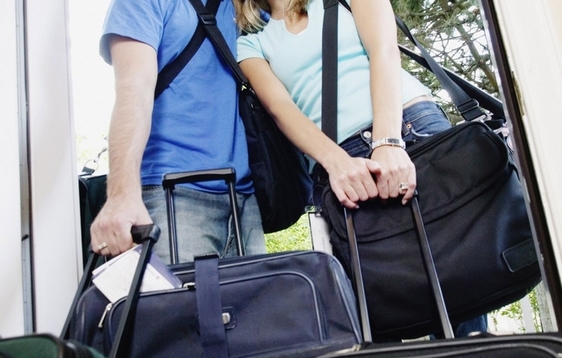
Valery Fridman believes that counting tourists based on the nights spent in the accommodation facilities is the way to go.
“According to international regulations, a tourist is someone who spends no less than 24 hours outside his or her house, which is why a system that would register the nights spent, as well as tourists’ monetary activity as regards tourism services, will be far better than the one we have right now. Provided, of course, that it takes root in our country’s environment,” he believes.
Problems that surface when trying to count visitors are manifold. What if one evening a married couple boards a train in Vologda, arrives in Moscow in the morning, visits the Tretyakov Gallery, goes on a boat excursion, dines at a café, goes to a theater and leaves for home late in the evening, then who are they? If we go by the existing Russian regulations, they are not tourists, not by a long shot – they are sightseers at best. That is, if they make it into the statistics in the first place… If a Chinese person flies to Moscow, spends a week getting to know the capital and its outskirts, and then proceeds to spend another week in St. Petersburg, where he or she engages in the same activities, until finally flying back home from Moscow, – can this tourist then be registered as a visitor of both Moscow and St. Petersburg? And how do we go about accounting for independent ‘domestic’ tourists, who seldom use accommodation facilities and have their own transport, all the while being tourists in every sense of the word?
Satellite system can, of course, amend the situation. But, considering the Russian environment, even it can hardly be expected to paint an objective picture. Another measurement method needs to be found which would be even more universal and flexible.
A fresh account
Back at the beginning of 2013 an appeal, initiated by Deputy Russian Minister of Culture Alla Manilova (who is also in charge of tourism in the country), was sent to Rosstat. It requested a change of the measurement method for tourists arriving in Russia.
Alla Manilova accounted for her determination to change the approach to tourism statistics with the fact that the World Tourism Organization (UNWTO) considers everyone who crosses the border a tourist.
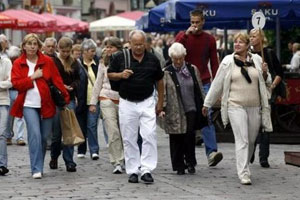 “Right now Rosstat considers only those who specify ‘tourism’ as their purpose of arrival to be tourists,” said Alla Manilova. “As a result, other large groups of foreigners are left out of the statistics. For instance – business visitors, who almost always partake in some kind of cultural tourism activities.”
“Right now Rosstat considers only those who specify ‘tourism’ as their purpose of arrival to be tourists,” said Alla Manilova. “As a result, other large groups of foreigners are left out of the statistics. For instance – business visitors, who almost always partake in some kind of cultural tourism activities.”
Failing to elicit a response from Rosstat, the Ministry of Culture opted for independent action. At the end of 2013 it put out a tender for a research project entitled ‘Developing a scientific system of statistical measurement and accounting for the field of tourism in Russia, with qualitative indicators of tourist flows’. The contract for 5 million rubles ($143,700) was won on November 29 of 2013 by D.S. Likhachov Russian Research Institute for Cultural and Natural Heritage.
The statement of work for the tender included the following information: “today there is a lack of reliable statistical data on the state of the tourism industry in Russia, which results in inability to set goals for professional staff training, lower competitive power of the Russian tourism industry on the international market, and hampers the accounting of financial flows in the sphere of tourism and related services.”
Larisa Pshenichnikova, head of Likhachov Institute’s department for coordination and development of off-budget activities, has confirmed that the project was handed over to the client in December of 2013 in accordance with the state contract. However, it should be borne in mind that it is not a ready-for-use measurement system, but rather a set of suggestions and recommendations aimed at creating a modern scientific system of statistical measurement and accounting in the field of tourism in Russia. That is why it still remains to be seen when the actual system will be put in place.
Basically, tourism statistics can be boiled down to three main criteria: the number of tourists, the number of nights and the amount of money spent. However, bringing them all to a common denominator, while at the same time accounting for real-life contingencies, remains an unsolved issue.
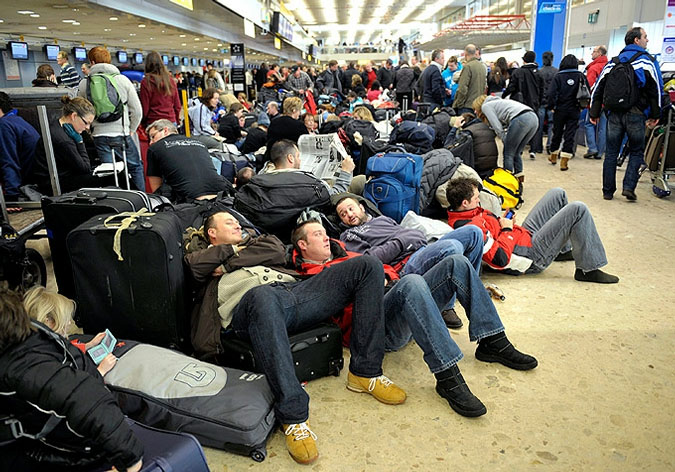
Consider this: if we look at a museum, there is only one entrance, so it is quite easy to determine both quantitative and qualitative indicators for the visitors, but how can we count the exact number of incoming tourists in a city, region or a country? The number of entry points rises exponentially, and while it is still feasible to register those who come by plane, ship or train, registering those who come by car is quite a challenge. Some experts say that introducing an official tourist tax could help, but even then it would primarily apply to those who stay at accommodation facilities and therefore are already registered. ‘Rogue’ tourists who travel by themselves will again slip under the radar…
Reference information: Tourism Satellite Account (TSA) was created by the United Nations World Tourism Organization and was implemented in countries with highly-developed tourism industry. It contains an extended set of statistical indicators and allows to calculate the contribution of the tourism industry to the GDP, employment, investments and fiscal revenue. Satellite accounts take into consideration not only quantitative, but also qualitative indicators of tourism.

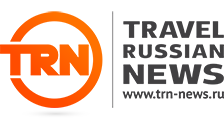
.jpg)
.jpg)
.jpg)
.jpg)